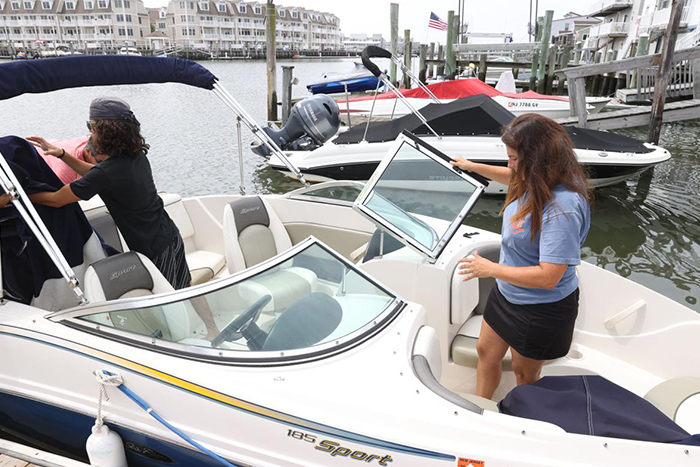
I Just Bought a Boat, What Should I Do Next?
You just bought a boat? Congratulations! Owning a boat is a great thing, and we bet you will enjoy every bit of having one. Know that while possessing a boat may be all fun and games, it also comes with a huge responsibility, one wrong move, and it could cost you more than you can expect. Boat owners must create a checklist of all the essential steps they need to do after their first boat purchase. They need to ensure everyone’s safety while the boat is on the water.
Whether you bought a new boat or a second-hand one, some things require consideration before you’re all set to sail on your new boat. First-time buyers make up about 1/3rd of the boat purchases, both new and old. This significant increase of 34% represents the potential the boating industry has.
A lot of people are opting to buy themselves a boat, but one factor that acts as a huge motivator is the pandemic life. While most of us aren’t going on any vacations, having a self-owned boat is the perfect getaway for families to hang out with one another, all while abiding by the rules of social distancing.
It’s the ideal opportunity to escape from the current situation and dwell on the adventures of you and your new boat, heading out to the water and enjoying some quality time.
Here is a beginner’s checklist with all that you need to do when you buy a boat.
Storage Location
While you can store a boat on its trailer, your main concern is where you should park it? Unfortunately, not all communities allow owners to part boats outside a residential driveway for long periods. Another thing you need to consider is that if the boat trailer can fit in your garage, it’s good to have a rough estimate of the boat’s size before you make your final purchase. There are a ton of other boat-storage options available. Mooring in a marina to dry-stack valet service, you name it.
Your location must be nearby so you can revisit your boat anytime you want to. For instance, storing your boat close by allows you to make any adjustments or repairs when you need to.
Maintenance (repairs, cleanliness, restoration)
Buying a boat is easy, but maintaining it is a lot more complex than it seems. You might have to undergo some obstacles from cleaning to a restoration before you can get your boat to be up and running.
If you purchased a second-hand boat, you might have to clean a layer of dust and grime first. Therefore, you must give it a good clean before you move on to any of the other steps for clear visibility. Use a water hose and start from the highest point towards the back. This will prevent you from going back and forth. For windows, use a soft brush and a specialized cleaning agent. While cleaning agents available at your household may be of some use, getting some special products for a good clean and maintenance is better.
Next, you would need to give your boat a good inspection. Inspection is essential before you get on to any repairs or restoration. Make sure you have adequate lighting so you can inspect the boat easily. Look out for any chances of rotting wood, the fuel that needs replacing, or any loose pieces that need fixing, and then create a checklist.
Have a Toolbox Ready
Make an inventory of tools that you need to fix the boat. Your toolbox should consist of everything you need at the point of repair and any extra ones you may need for unforeseen circumstances. Know that when it comes to repairing your boat, the issues that will emerge will vary differently and accordingly. Therefore, you must prepare for every situation. It is best to consult a professional before heading on to buy some useful tools.
Departure Checklist
Just like pilots always have a flight plan right before they are about to depart, your boat should have a similar ‘float plan.’ Create an effective float plan with your family and friends before your departure, ideally a day before you head out for the day. Let them know of your whereabouts, where you are headed, and when they should expect you to return. This ensures you have a safe and enjoyable journey.
Fueling
If you notice that the gas-gauge is reporting low fuel, it’s time your boat needs a refuel. However, there are two things you must consider before that. The first thing is getting the correct fuel in your boat. Refer to the owner’s manual for any fuel octane requisites. Bear in mind marine engines may not use motor fuel with over 10 percent ethanol. Also, be careful about any spills.
Operating Your Boat
Your retailers should give you a quick rundown of the new boat and show you how to operate it with all the systems. Some might even take you out on a free demonstration. However, there’s a lot more to it than just starting an engine and steering the wheel. Do your research and consult a professional before you hit the waters by yourself.
For all of you who purchased a pre-owned boat, consult the previous boat owner to know how to operate the boat and also the operator’s manual to have a clear idea. Remember not to travel too far on your own before you get the hang of all the controls and the way the system works.
The most important step is to be safe and responsible during your journey. Ensure that you know everything there is to know about your boat and the route you will use. Lastly, enjoy your experience!
